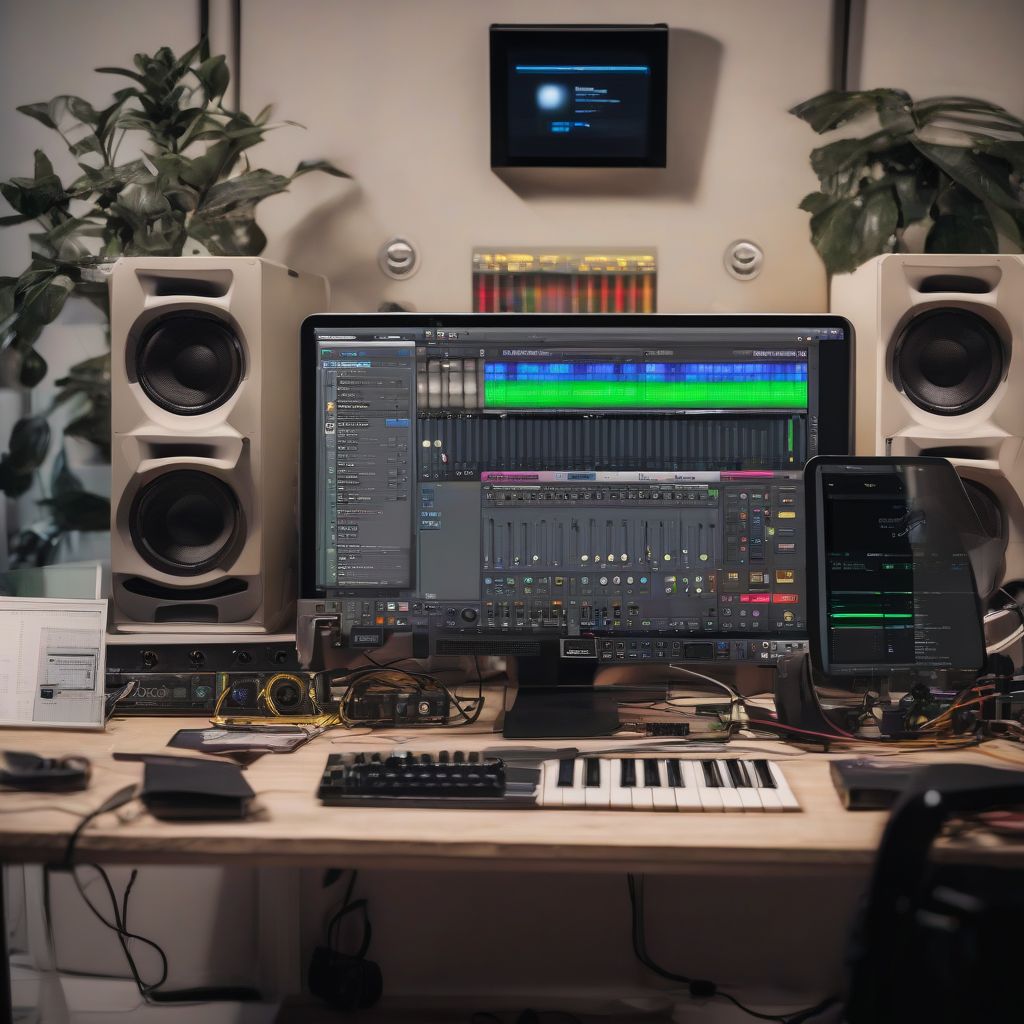Imagine this: you’re sitting in your home studio, a fresh melody swirling in your head. But there’s a problem. You don’t have a grand piano, a full drum kit, or a vintage synth at your fingertips. Does this sound familiar? Don’t worry; this is where the magic of virtual instruments and plugins comes in.
Gone are the days of needing a room full of expensive gear to create professional-sounding music. Now, with the power of digital audio workstations (DAWs) and the vast world of virtual instruments and plugins, you can build your dream sonic palette right on your computer.
This guide will be your roadmap to navigating the exciting world of virtual instruments and plugins. Whether you’re a complete beginner or have some experience, get ready to unlock a universe of creative possibilities.
What are Virtual Instruments and Plugins?
Before we dive into the “how,” let’s clarify the “what.”
Virtual Instruments (VSTs): Think of these as digital emulations of traditional instruments. They recreate the sounds of everything from pianos and guitars to exotic world instruments and even entirely fictional soundscapes. You control them using a MIDI keyboard or by inputting notes directly into your DAW.
Plugins: These are like effects pedals for your digital audio. They process and enhance your audio signals, adding depth, character, and polish to your sounds. From classic reverbs and delays to sophisticated mastering tools, plugins are essential for shaping your sonic vision.
Why Use Virtual Instruments and Plugins?
- Accessibility: You don’t need a fortune (or a mansion) to afford a vast collection of instruments and effects. Virtual instruments and plugins offer an affordable way to access a world of sounds.
- Versatility: Explore endless sonic possibilities with a few clicks. Switch from a vintage organ to a futuristic synth in seconds, all within the same project.
- Convenience: No need to mic up a drum kit or worry about room acoustics. Virtual instruments provide instant, high-quality recordings in the comfort of your own space.
- Creativity: Many plugins allow for sound design possibilities that go far beyond the limitations of physical gear. This opens doors to truly unique sonic creations.
Getting Started: Choosing the Right Tools
The world of virtual instruments and plugins can feel overwhelming at first. Here’s what to consider:
1. Your DAW: Most DAWs come bundled with basic virtual instruments and plugins to get you started. Familiarize yourself with these before exploring third-party options.
2. Your Needs: What kind of music do you want to create? Are you drawn to realistic orchestral sounds or experimental electronic textures? Identify your needs to narrow your search.
3. Your Budget: Virtual instruments and plugins range from free to hundreds of dollars. Set a budget and explore options within that range.
4. Research: Read reviews, watch demos, and explore online communities to see what other producers are using and recommending.
 Best Virtual Instruments and Plugins
Best Virtual Instruments and Plugins
Mastering the Basics: Using Virtual Instruments and Plugins in Your DAW
Once you’ve chosen your tools, it’s time to put them to work. While specific processes might vary slightly depending on your DAW, the general workflow remains consistent:
-
Installation: Most plugins come in VST, AU, or AAX formats. Ensure compatibility with your DAW and follow the installation instructions provided.
-
Loading: Open your DAW and create a new track. Depending on your software, you’ll typically find virtual instruments under an “Instruments” or “Plugins” menu. Select the desired instrument or effect and load it onto your track.
-
MIDI Control: For virtual instruments, you’ll need a way to trigger notes. This can be done using a MIDI keyboard connected to your computer or by drawing MIDI notes directly onto the piano roll within your DAW.
-
Audio Routing: For audio plugins (like effects), you’ll need to route your audio signal to the plugin. This usually involves selecting the plugin as an insert effect on the desired audio track.
-
Tweaking and Experimentation: Now comes the fun part! Adjust the parameters of your virtual instruments and plugins to sculpt your desired sounds. Don’t be afraid to experiment and get creative.
[amazon bestseller=”music production”]
Essential Tips for Using Virtual Instruments and Plugins
- Start Simple: Begin with a few essential plugins, such as EQ, compression, reverb, and delay, and gradually expand your toolkit.
- Learn the Fundamentals: Understanding basic audio concepts like gain staging, frequency ranges, and signal flow will significantly improve your results.
- Less is Often More: Avoid overusing plugins. Too many effects can muddy your mix and negatively impact the clarity of your sound.
- Develop Your Ear: Train your ears to identify subtle nuances in sound. This will help you make informed decisions when choosing and tweaking plugins.
- Explore Presets: Most virtual instruments and plugins come with presets, offering a great starting point. Use them as inspiration and tweak them to fit your needs.
Conclusion: Your Journey to Sonic Mastery
Stepping into the world of virtual instruments and plugins is like opening a door to an endless realm of sonic exploration. It’s a journey that combines technical know-how with artistic intuition.
Remember, the key is to start experimenting, be patient, and never stop learning. As you refine your skills and develop your ear, you’ll discover your unique sonic voice and unlock the full potential of these powerful tools. Now, go forth and create the music you’ve always dreamed of!
Do you have any tips or tricks for using virtual instruments and plugins? Share your thoughts and experiences in the comments below! Don’t forget to share this guide with fellow music creators on your journey to sonic excellence!
